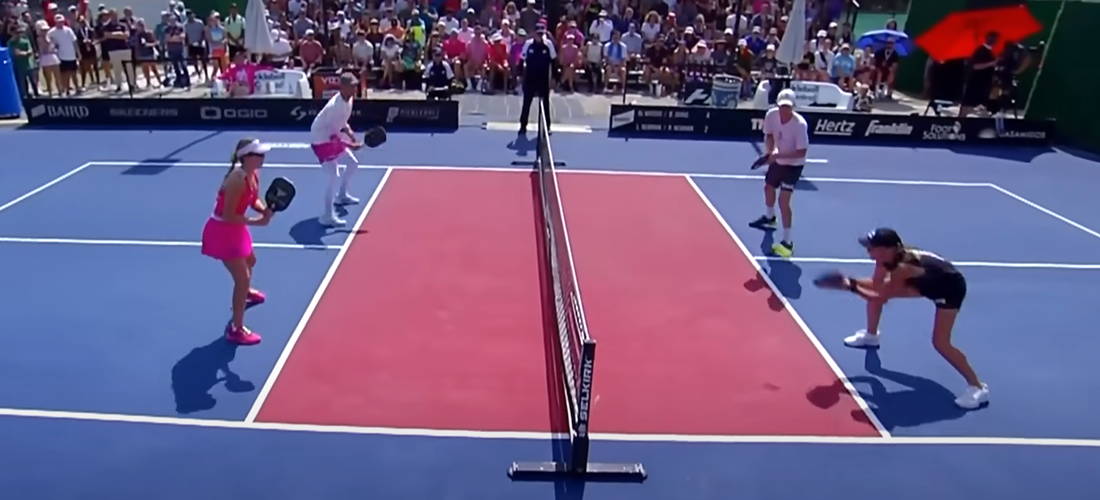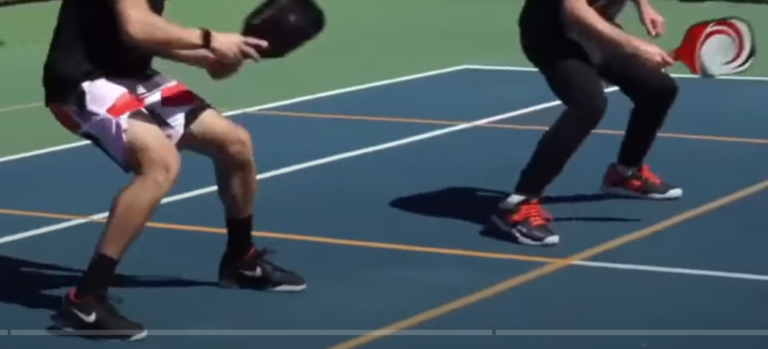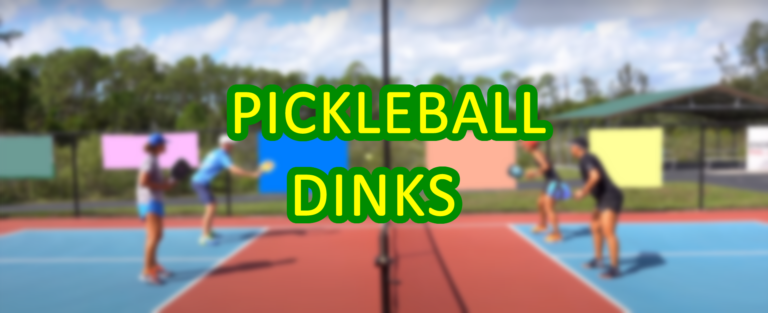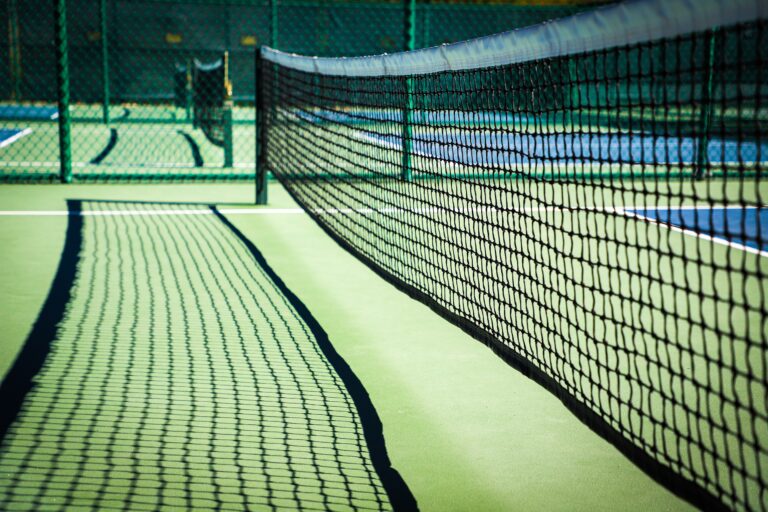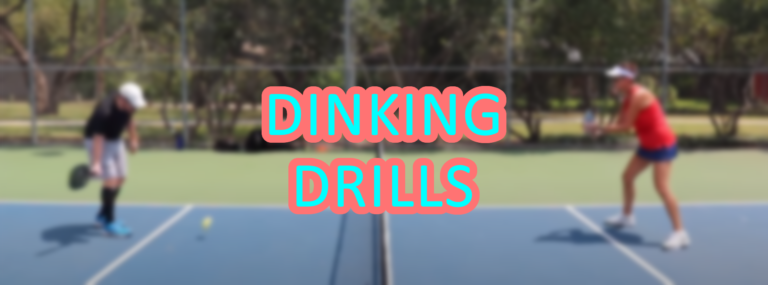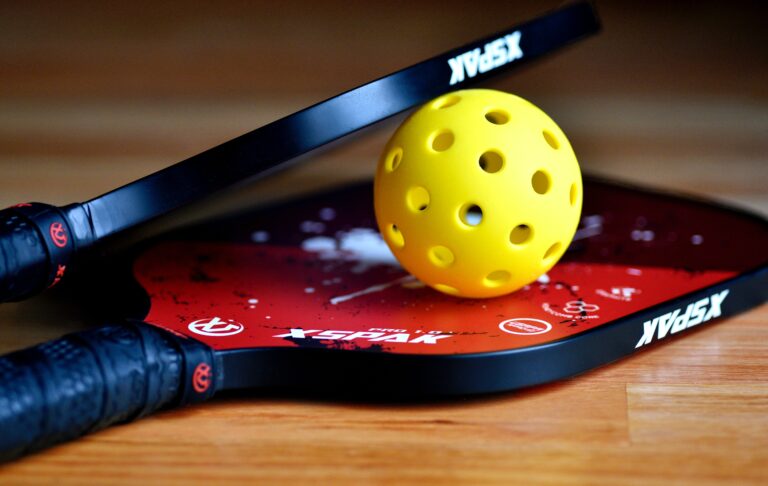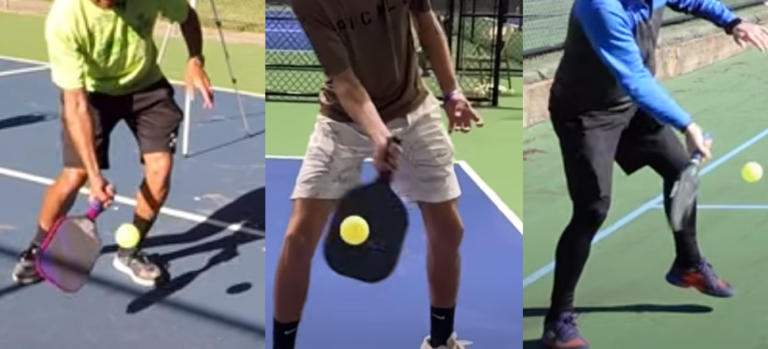Pickleball Techniques for Control and Precision
Welcome to an exciting journey into the world of pickleball, where precision meets power and control reigns supreme! If you’re an avid pickleball enthusiast or a curious beginner looking to elevate your game, you’ve come to the right place. In this comprehensive guide, we’ll delve into the realm of pickleball techniques for control that will not only enhance your game but also elevate your precision to new heights.
Whether you’re aiming to finesse your shots, master the art of placement, or simply outmaneuver your opponents with strategic plays, we’ve got you covered. Get ready to unlock the secrets behind that elusive control and unmatched precision that separates the good from the great on the pickleball court. It’s time to take your skills to the next level and become a true maestro of pickleball technique!
Pickleball Techniques for Control – Key Elements
Imagine standing on the pickleball court, paddle in hand, with a sense of confidence radiating from your every move. Understanding the key elements of pickleball techniques for control is where your journey to mastery begins. It’s the cornerstone upon which you’ll build your skills, allowing you to dictate the pace, placement, and direction of the game.
Understanding the Grip
When you step onto the pickleball court, the grip you wield on your paddle becomes the bridge between your intentions and the execution of your shots – a key element that holds the reins of control firmly in your hands. Let’s dive into the world of pickleball grips, where precision and finesse intertwine to shape your game.
Picture this: your fingers wrap around the handle of your paddle, forming a bond that translates your thoughts into actions. The grip, often overlooked, is your first point of contact with the game. As you clasp the handle, find that delicate balance between a grip that’s too tight, which restricts your movement, and one that’s too loose, robbing you of control. Aim for a Goldilocks grip – just right.
Eastern Grip
The Eastern grip, reminiscent of shaking hands, is your gateway to versatility. It empowers you to execute a wide range of shots – from powerful drives to delicate drops – with finesse. This grip allows your wrist to move naturally, granting you the ability to manipulate the angle of your paddle, dictating the trajectory of the ball.
Continental Grip
But don’t overlook the power of the Continental grip. It’s your secret weapon for smashing shots with pinpoint accuracy and control. By slightly altering the angle of your wrist, you can channel power without sacrificing finesse, giving your shots an edge that keeps opponents on their toes.
Semi-Western Grip
As you stand ready at the baseline, the Semi-Western grip beckons you to navigate the terrain of spin. The unique angle allows you to impart topspin on your shots, making the ball dance to your rhythm. Master this grip, and you’ll find yourself creating shots that dive and swerve unpredictably, leaving your competitors grasping at air.
Remember, the grip isn’t a static entity; it evolves with every shot you make. Feel the paddle become an extension of your hand, and adapt your grip to suit the situation. Approach the net with a firm grip for volleying control, then subtly adjust for a softer touch during dinking exchanges.
Finding the Sweet Spot
Getting acquainted with the sweet spot on your pickleball paddle is like discovering the heart of your game – it’s where precision and power merge into a symphony of controlled shots. Here’s how you can develop a deep bond with that elusive sweet spot as you embark on your journey to mastering control in pickleball:
Start with Awareness
Begin by acknowledging that the sweet spot exists. It’s that magical area on the paddle’s face where the ball connects most efficiently. Understand that hitting the ball closer to the sweet spot will result in cleaner, more accurate shots.
Sensory Connection
As you practice, close your eyes occasionally and focus on the sensation when the ball strikes the paddle. Notice how it feels in your hands and the feedback it provides. This tactile awareness will help you identify when you’ve hit the sweet spot.
Progressive Hits
Begin your practice session with slow and deliberate shots. Gradually increase your pace while maintaining control. Pay attention to the shots that feel the most effortless and solid – chances are, you’ve found the sweet spot.
Visual Alignment
During your practice, watch the ball as it comes into contact with the paddle. Aim to align the ball with the center of the paddle’s face. With time, you’ll instinctively adjust your position to ensure that perfect alignment.
Consistent Contact
Focus on achieving consistent ball-to-paddle contact. Strive for a clean hit without vibrations or a “dead” feeling in your paddle. The sweet spot will reward you with a satisfying sound and minimal feedback.
Ball Placement
Experiment with hitting the ball in various spots on the paddle’s face. Notice how each spot affects the ball’s trajectory and your shot’s control. The more you explore, the better you’ll understand the sweet spot’s distinct feel.
Target Practice
Set up targets on the court and aim for them using different shots. When your shots hit the target accurately and smoothly, you’re likely connecting with the sweet spot. Over time, your consistency will improve.
Varied Shots
Practice different shots – drives, volleys, dinks – with the intention of finding the sweet spot on each one. Adapt your paddle angle and technique as needed for different shots, always striving for that perfect connection.
Mental Visualization
Before each shot, visualize the ball hitting the precise center of the paddle’s face. This mental image will help you subconsciously adjust your movements to hit the sweet spot consistently.
Patience and Repetition
Developing an intimate relationship with the sweet spot takes time and repetition. Embrace the process and celebrate each successful hit as you progress toward a more controlled and precise game.
Remember, the sweet spot is your ally in achieving pickleball mastery. By practicing deliberately and staying attuned to the sensations and feedback from your paddle, you’ll refine your control, enhance your precision, and create a harmonious connection between you, your paddle, and the ball.
Body Positioning
Mastering proper body positioning is another key element when learning pickleball techniques for control and finesse. By aligning your body correctly, you’ll set the stage for powerful shots, precise placement, and strategic plays. Here’s how you can elevate your game by honing your body positioning:
Mindful Stance
Begin by adopting a mindful stance on the court. Stand with your feet shoulder-width apart, knees slightly bent, and weight balanced on the balls of your feet. This athletic posture primes you for quick movements and easy transitions.
Face the Net
Always face the net, keeping your shoulders square and hips aligned with the court. This position allows you to react swiftly to incoming shots and adjust your body for optimal shot placement.
Split Step
Cultivate the habit of the split step – a small hop where your feet come together in mid-air. Time this with your opponent’s hit to stay light on your feet, ready to move in any direction with precision.
Positioning for Shots
Adjust your position based on the shot you’re about to make. For forehand shots, position yourself slightly to the side of the ball, allowing your dominant arm to swing freely. For backhand shots, pivot your body to face the net more squarely, using your non-dominant arm for balance.
Bend at the Hips
When preparing for a shot, bend at the hips while keeping your back straight. This dynamic posture ensures a lower center of gravity, enhancing your stability and control during shots.
Paddle Height
Maintain an optimal paddle height, roughly around waist level. This allows for quick reactions to both high and low shots while ensuring a balanced and controlled swing.
Follow Through
Focus on a smooth follow-through after each shot. Your body’s natural motion should guide your follow-through, leading to controlled and accurate shots.
Transitioning
When moving around the court, practice smooth transitions. Shuffle your feet rather than taking large steps, ensuring you maintain your balance and positioning for the next shot.
Stay Centered
Strive to return to the center of the court after each shot. This central position gives you the best coverage of the court, making it easier to reach shots and maintain control.
Eyes on the Ball
Keep your eyes fixed on the ball at all times, even during rallies. This allows you to track the ball’s movement accurately and make split-second decisions for your shots.
Adapt and Anticipate
As the game progresses, adapt your body positioning based on your opponent’s tendencies and shot selections. Anticipate their moves to position yourself optimally for your response.
Practice with Purpose
During practice sessions, focus on maintaining proper body positioning while executing different shots. Regular practice will reinforce muscle memory and make correct positioning second nature.
Embrace these body positioning principles along with other pickleball techniques for control and you’ll not only enhance your control in pickleball but also elevate your overall game. Remember, control is the result of a symphony of coordinated movements, and your body’s positioning is the conductor guiding each note to perfection.
Practicing Control: Drills and Exercises
Let’s dive into some effective drills and exercises that will help you sharpen your control in pickleball. By dedicating time to these practices, you’ll witness a noticeable improvement in your shot precision and overall game finesse.
Target Practice Dinks
Set up targets on both sides of the net in different zones (corners, mid-court, etc.). Focus on dinking the ball into these specific areas, honing your ability to control ball placement.
Three-Thirds Drill
Divide the court into three sections: front, middle, and back. Stand near the net and practice hitting the ball into each section alternately, ensuring controlled shots without going out of bounds.
Soft Hands Wall Drill
Stand close to a wall and practice dinking the ball softly against it. This drill develops touch and control as you adjust the power of your shot to prevent the ball from rebounding too far.
Rally at Half Speed
Play a practice rally with your partner, focusing on hitting the ball at half speed. This drill encourages deliberate and controlled shots, allowing you to refine your placement and technique.
Partner Control Drill
Stand at the net with a partner on the other side. Rally back and forth, aiming to keep the ball within a certain height and distance from the net. This exercise helps in controlling the trajectory and placement of your shots.
One-Bounce Drill
Allow the ball to bounce once before hitting it back to your partner. This drill encourages you to wait for the right moment and control the ball’s trajectory effectively.
Lob to Dink Transition
Have your partner gently lob the ball to you, and practice transitioning from a defensive lob shot to a controlled dink near the net. This helps you shift from defensive to offensive play while maintaining control.
Angle Control Drill
Set up cones or markers at various angles on the court. Practice hitting the ball so that it bounces and lands within the designated angle, training your ability to control shot direction.
Drop Shot Challenge
Take turns with your partner hitting drop shots to each other. The objective is to make the ball land just over the net, teaching you finesse and precision in controlling the ball’s trajectory.
Consistency Challenge
Rally with your partner, aiming for a set number of consecutive shots without making an error. This drill improves your shot consistency and control under pressure.
Random Placement Dinks
Have your partner call out a specific placement (e.g., cross-court, down the line) before each shot. This exercise enhances your ability to control the ball’s direction on demand.
Mirror Drill
Stand facing your partner, mimicking their shots. This drill encourages you to match their control and finesse, helping you internalize the mechanics of controlled shots.
Remember, the key to mastering pickleball techniques for control lies in consistent practice and a deliberate focus on improving your technique. Incorporate these drills into your training routine, and watch your ability to control the ball and dictate the pace of the game soar to new heights.
Mental Aspects of Control in Pickleball
The mental aspects of control in pickleball are like the unseen conductor of your game, shaping your shots with finesse and precision. Patience and timing become your allies, as you wait for the perfect opportunity to execute your moves. Confidence courses through your veins, infusing each stroke with the belief that you can place the ball exactly where you want it.
Deep breaths calm your nerves, and positive visualizations pave the way for success. Adaptability becomes second nature, allowing you to adjust your strategy on the fly, like a strategist in a constantly shifting battlefield. You learn from your mistakes, using them as stepping stones toward improvement.
Mastering pickleball techniques for control isn’t just about hitting the ball—it’s about reading the game, understanding your opponent, and maintaining a Zen-like composure even when the pressure mounts. As you embrace the mental aspects of control, you become the maestro of your pickleball performance, crafting a harmonious blend of mind and body that leaves a lasting impact on the court.
Conclusion
As you wrap up this journey through the world of pickleball techniques for enhanced control and precision, remember that every little adjustment you make can lead to significant improvements in your game. The key is practice – consistent, focused practice.
By understanding the importance of grip, body positioning, and finesse shots like the dink, you’ve armed yourself with valuable tools to take your pickleball game to the next level. But it doesn’t end here. It’s time to hit the court with renewed determination and a practical mindset.
Start small, incorporating these techniques into your warm-ups and drills. Pay attention to your grip, consciously work on your body positioning, and dedicate time to mastering those delicate dink shots. Embrace the learning process, and don’t shy away from mistakes – they’re stepping stones toward improvement.
Remember, control and precision are within your reach. They’re not reserved for the elite; they’re skills you can cultivate and refine over time. So, lace up your shoes, grab your paddle, and head to the court with newfound confidence. The journey to mastery begins with these techniques, but the destination is a game that’s smoother, more calculated, and undeniably satisfying. Your opponents won’t know what hit them when you unleash your newfound control and precision on the pickleball court. Get out there and make your mark!
